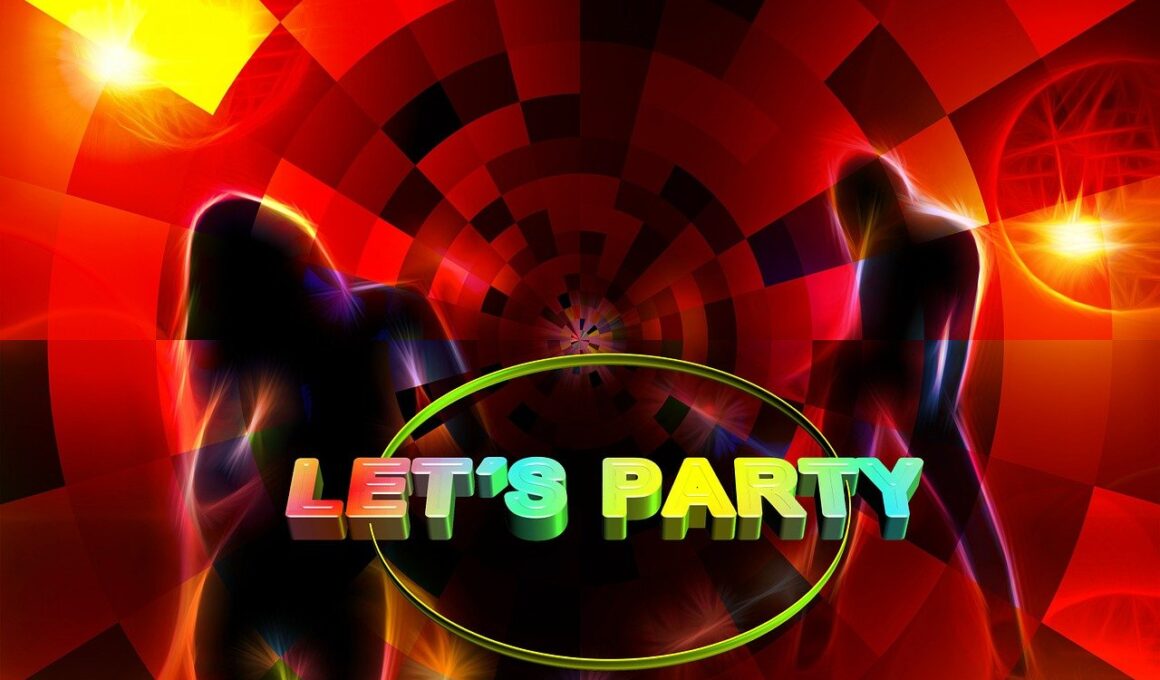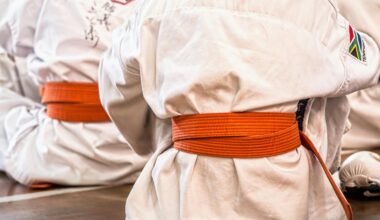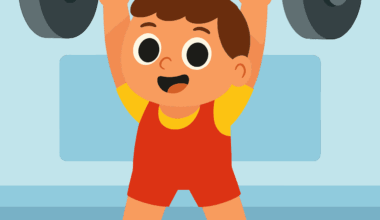Improving Coordination Through Dance Aerobics
Dance aerobics is an exhilarating way to enhance coordination while having fun. Many beginners feel intimidated by the idea of dance, but it’s important to know that everyone starts somewhere. This form of exercise combines rhythmic movements, music, and aerobic conditioning, promoting both physical and mental benefits. Unlike traditional workouts, dance aerobics invites creativity and expression, which can lead to greater motivation and enjoyment. Besides the physical aspect, engaging in dance helps improve coordination, offering participants a unique way to develop their skills. Coordination is not merely about moving limbs synchronously; it integrates balance, timing, and spatial awareness. By immersing oneself in the structured choreography of dance aerobics, participants can notice gradual improvement, boosting their confidence along the way. Regular practice can enhance muscle memory, allowing for the movement patterns to become second nature. Another vital element is the social aspect of dance aerobics, as it often takes place in group settings. This community atmosphere further energizes the experience, as individuals feed off one another’s energy, creating a supportive environment for learning and growth.
The Basics of Dance Aerobics
Starting dance aerobics doesn’t require extensive experience; in fact, beginners can easily embrace the fundamentals. One of the essential components is proper warm-up to prepare the body for movement. This includes dynamic stretches that engage the muscles and improve flexibility. A typical session often begins with an introduction to basic steps, making it easier to follow along with the instructor. As students progress, they can gradually add complexity to their routines, integrating turns, jumps, and other movements. Breaking down choreography into manageable pieces allows individuals to focus on mastering specific skills without becoming overwhelmed. Importantly, rhythm is critical in dance aerobics, as timing and beats influence how movements are executed. Learning to count beats can enhance understanding and execution of steps. Joining a local class or accessing online resources can also provide varied levels of difficulty, catering to individual needs. Furthermore, to foster improvement, regularly practicing at home can be beneficial. Allowing for repetition in learning can facilitate muscle memory development, crucial for mastering dance moves. Therefore, consistent practice remains vital for enhancing coordination and expanding one’s capabilities in dance aerobics.
The benefits of dance aerobics extend beyond just physical fitness. Engaging in this form of exercise releases endorphins, significantly impacting mental health and well-being. The joy of movement combined with music often alleviates stress, creating a positive emotional impact on participants. Many individuals find that doing something enjoyable, like dance, can lead them to maintain a consistent workout routine. The supportive atmosphere of a group class can reduce feelings of isolation, fostering social connections and friendships. Additionally, dance aerobics improves cardiovascular health, which is vital for overall wellness. As heart rate increases through dance, the body undergoes several physiological changes, enhancing endurance over time. Furthermore, dance aerobics aids in weight management, as many classes burn significant calories. This makes it a great option for those looking to shed unwanted pounds while improving their skills and having fun. The variety of movements involved promotes muscular engagement, ensuring a full-body workout that strengthens various muscle groups. Thus, embracing dance aerobics not only prepares individuals to improve coordination but contributes to a healthier lifestyle overall.
Enhancing Coordination through Techniques
To effectively improve coordination through dance aerobics, beginners can focus on specific techniques that promote rhythmic movement and body awareness. A common approach is to break down complex movements into simpler, more achievable components. This method allows for gradual progression, enabling learners to master individual elements before integrating them into a complete routine. Additionally, incorporating mirror work can help individuals visualize their movements, offering immediate feedback on posture and alignment. This technique encourages self-correction, which is essential for developing coordination. Practicing with a partner can also be advantageous, as it introduces synchronization challenges that require individuals to adjust their movements. Such teamwork enhances adaptability and responsiveness, both crucial aspects of coordination. Furthermore, focusing on core strength is essential; fostering a stable core leads to improved balance and control. Engaging in exercises specifically designed to strengthen core muscles will support the execution of dance movements. Finally, understanding the music’s tempo is imperative for developing timing skills. By recognizing how to match movements with beats and rhythms, beginners can enhance their overall coordination in dance aerobics.
Music plays a central role in dance aerobics, making the experience enjoyable while providing the necessary rhythm to improve coordination. Selecting appropriate tracks with a steady tempo allows participants to find their pace and intuitively respond to the beat. Different genres can also inspire varied movement patterns, encouraging creativity. For example, a lively track might incorporate faster footwork, while a slower song can inspire graceful and fluid motions. Experimenting with different styles of music exposes beginners to diverse rhythmic structures, further refining their coordination skills. Collaborating with instructors who understand the importance of music selection can elevate the entire experience. Instructors can personalize playlists to cater to different energy levels or themes, enhancing engagement among participants. Moreover, when participants learn to identify beats and accents within songs, they create a stronger connection between their movements and the music. This connection empowers individuals to explore their sense of timing and coordination more deeply. As dancers become more attuned to the rhythm, they will notice an overall improvement in their ability to execute synchronized movements with grace and precision.
Setting Goals for Progress
Establishing clear and achievable goals is crucial in the journey of mastering coordination through dance aerobics. Setting personal objectives provides motivation and a sense of direction for growth. Beginners can start by identifying specific skills they wish to improve, such as mastering a challenging routine or enhancing their balance. Tracking progress is essential; maintaining a workout journal or utilizing fitness apps can help individuals document their achievements over time. This practice not only offers tangible evidence of growth but also boosts confidence as progress becomes visibly apparent. Additionally, joining communities or groups focused on dance aerobics can foster accountability. Sharing goals with like-minded individuals creates an encouraging environment where participants can inspire one another. Engaging in friendly discussions about challenges or successes can strengthen bonds and build camaraderie. It’s also important to allow for flexibility in goal-setting; as proficiency improves, individuals might want to update their objectives to reflect their current capabilities. This adaptive mindset nurtures ongoing growth and enthusiasm, ensuring that dance aerobics remains an exciting and rewarding practice for individuals seeking to improve their coordination.
Finally, maintaining a positive mindset during the journey of learning dance aerobics is fundamental to fostering coordination and skill development. Embracing the process, understanding that progress takes time, can help prevent frustration or discouragement. Reminding oneself that every effort counts provides intrinsic motivation. Making room for mistakes is essential, as they often serve as teachers in the learning process. Individuals should view challenges not as setbacks but as opportunities for growth. Celebrating small victories along the way can also increase motivation and reinforce the desire to improve. Seeking feedback from instructors or peers can enhance understanding and highlight areas for improvement. Positive reinforcement can significantly impact an individual’s mindset and self-esteem. Incorporating fun variations or themed classes can recreate excitement in the workout routine, keeping participants engaged and open to learning new skills. Classes that include different styles of dance can broaden one’s dance vocabulary; this versatility greatly enriches overall coordination. Thus, fostering a resilient and adventurous spirit throughout the dance aerobics journey ultimately leads to lasting improvement in coordination and a lifetime of joyful movement.
In conclusion, dance aerobics is a transformative exercise modality that enhances coordination while providing a multitude of additional benefits. By engaging in dance aerobics, beginners discover the joy of movement, build social connections, and experience improved physical fitness. It offers a holistic approach, addressing both body and mind. As they progress, they gain confidence in their abilities and engage with supportive communities that encourage them to continue. Implementing foundational techniques, focusing on music, and setting clear goals are all critical factors that enhance one’s journey through dance aerobics. Celebrating accomplishments and embracing a positive mindset foster continued growth and improvement. Therefore, individuals looking to enhance their coordination should consider taking up dance aerobics as a part of their fitness routine. The skills developed through this exciting form of exercise will benefit them not only in dancing but in various daily activities as well. Overall, dance aerobics opens the door to a fulfilling experience filled with rhythm, creativity, and self-discovery. Those who commit to this enchanting practice will reap rewards that extend far beyond the dance floor, making it a truly transformative journey of coordination and expression.


